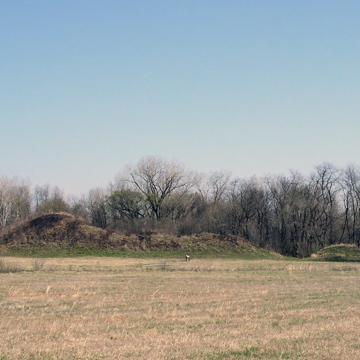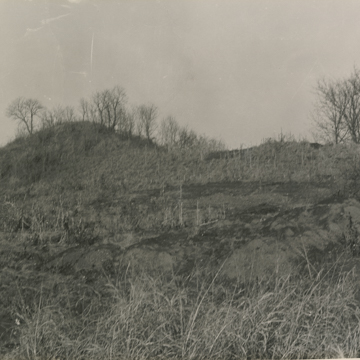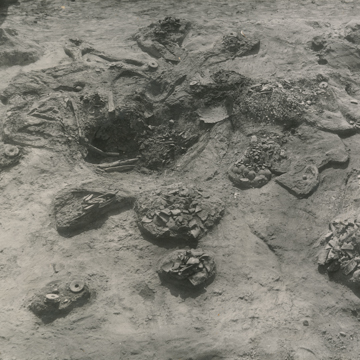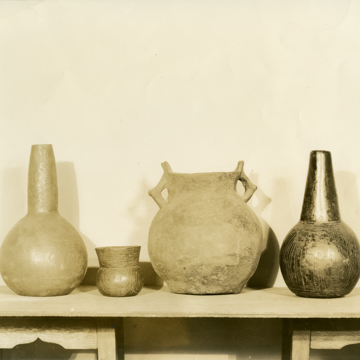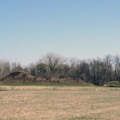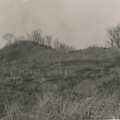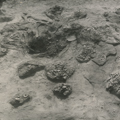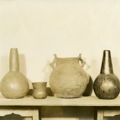Spiro Mounds is one of the most important centers of prehistoric American Indian sites in the United States. Located in Eastern Oklahoma along the Arkansas River, approximately fifteen miles southwest of Fort Smith, Arkansas, the site encompasses 150 acres and includes twelve earthen mounds. The prehistoric Spiro people established a permanent settlement in this area around 800 CE. Here, they developed a sophisticated culture comprising an extensive trade network, religious center, and political system that influenced the entire region.
Like other Mississippian-culture towns, the Spiro people built large, complex earthworks surrounding a leveled central plaza that formed the heart of community activity. Bordering the plaza was a village where much of the population lived, although archaeologists have discovered over twenty additional village sites within a five-mile radius. The mound center was abandoned around 1450 for unknown reasons, although the village continued to be occupied for another 150 years. During the time of their occupation, Spiro leaders cultivated political, economic, and religious ties with more than sixty different tribes as far as the Rocky Mountains to the coast of Virginia and from the Gulf of Mexico to the Great Lakes. Spiro Mounds was one of four regional mound centers; the others include Cahokia in Illinois, Etowah in Georgia, and Moundville in Alabama.
The site was unoccupied from circa 1600 until the 1870s, when Choctaw and Chickasaw freedmen cleared the site for farming. It was not until the Great Depression, however, that parts of the site were destroyed. In 1933, a group of commercial diggers who identified themselves as the Pocola Mining Company acquired a lease on the burial mound, known as Craig Mound or Spiro Mound, located approximately 1,500 feet southeast of the central plaza. In two years of haphazard digging they destroyed one-third of the mound to retrieve artifacts of stone, copper, shell, basketry, and fabric to sell to collectors. The destruction led to the creation of laws that allowed for the preservation of archaeological sites, which were some of the first in the country to do so. Administration of the Spiro Mounds Archaeological Center ultimately was placed with the Oklahoma Historical Society, which opened the site to the public in 1978. On display are many of the perishable materials such as basketry, woven fabric, lace, feathers, fur, and other fragile artifacts that were preserved in a hollow cavity within the mound, where conditions were favorable enough to lead to their natural preservation. Also found at the site were Mississippian stone statuary thought to have come from Cahokia.
References
Brown, James A. Spiro Studies. 4 vols. Norman: Stovall Museum of Science and History, University of Oklahoma, 1964-1976.
La Vere, David. Looting Spiro Mounds: An American King Tut's Tomb. Norman: University of Oklahoma Press, 2007.
Peterson, Dennis A. “Spiro Mounds.” The Encyclopedia of Oklahoma History and Culture. Accessed September 16, 2021. https://www.okhistory.org/.
Rogers, J. Daniel, Don G. Wyckoff, and Dennis A. Peterson, eds. Contributions to Spiro Archaeology: Mound Excavations and Regional Perspectives. Studies in Oklahoma's Past 16. Norman: Oklahoma Archeological Survey, 1989.
Schambach, Frank. “The Place of Spiro in Southeastern Prehistory: Is it Caddoan or Mississippian?” Southeastern Archaeology 9 (1990): 67-69.
“Spiro Mounds Archaeological Center.” Oklahoma Historical Society. Accessed September 16, 2021. https://www.okhistory.org/.

